What’s with the vegetables?
This is one of those things that just is, with no good explanation.
Exhibit A – kindergarten:
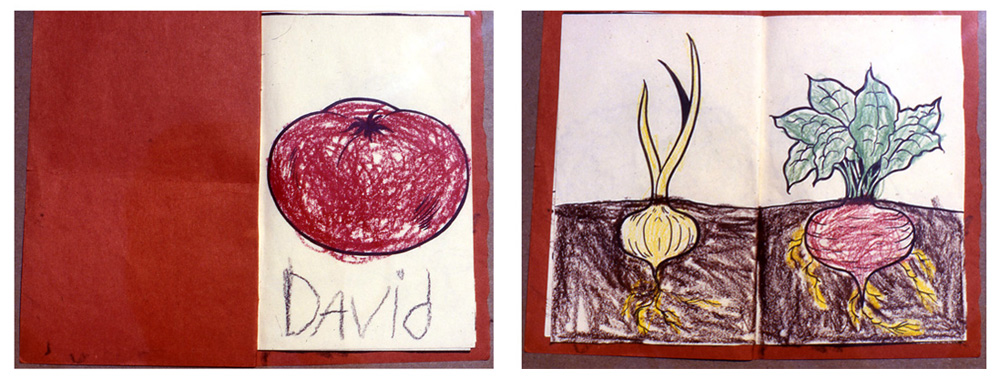
It got serious early in high school with this, which you’ve seen in an earlier post:
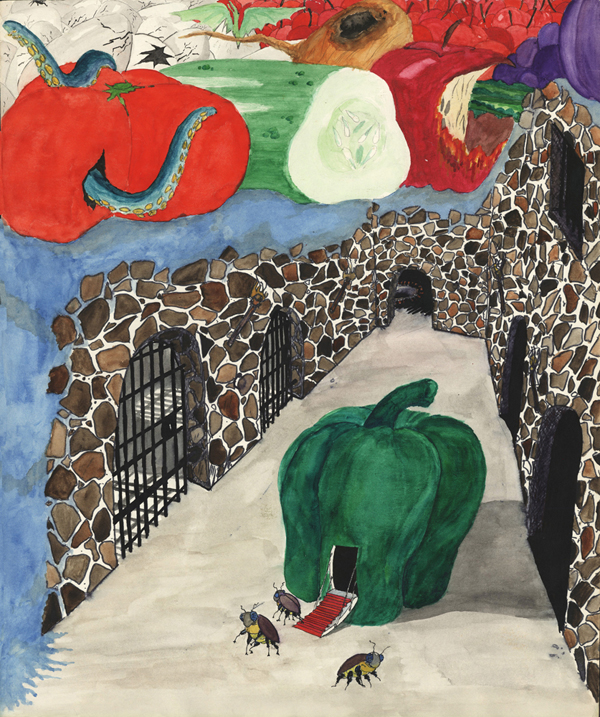
I drew the pepper first, because …
I don’t know why. The shape? The color? That’s really the visual appeal of your fruits and vegetables. They are so satisfying to draw.
Later at RISD they returned. Here in a piece from Sophomore Year:

And a detail:
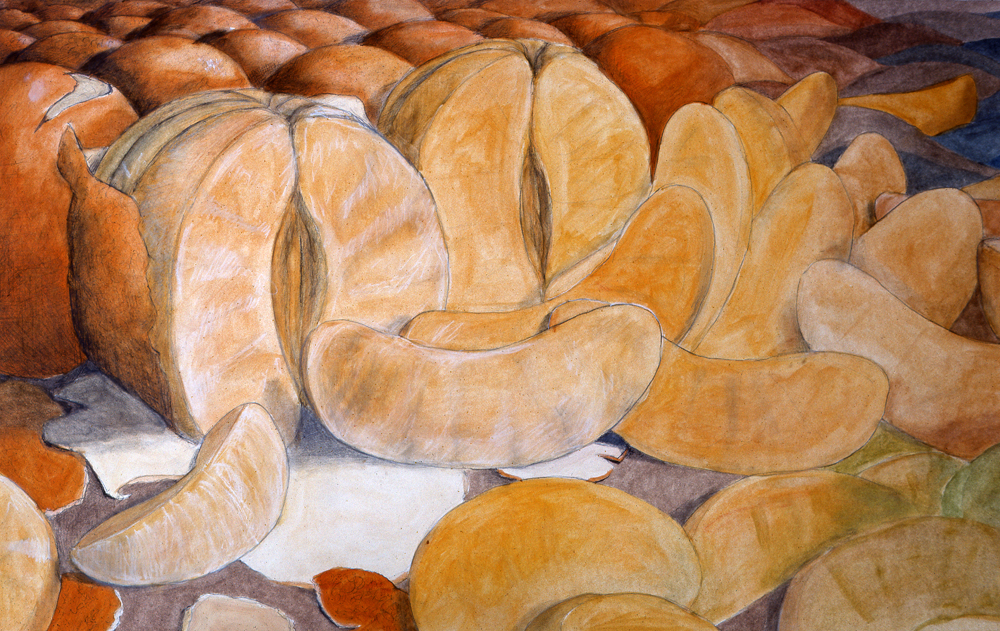
(Okay, it’s fruit)
The full piece was 40 inches high and almost 10 feet long. The original was lost in an apartment fire many years ago. The fire also claimed my RISD sketchbooks – the most tragic loss for me. In one of the sketchbooks were several pieces called, “Vegetables From Space”. Sort of like 1950’s movie posters with, well, vegetables from space.
(We’ll return to this piece later, as it was the genesis of my book, Free Fall)
The veggies then lay dormant until the year after I graduated and I was working on new pieces for my portfolio.
I had folktale/fairytale imagery like this:
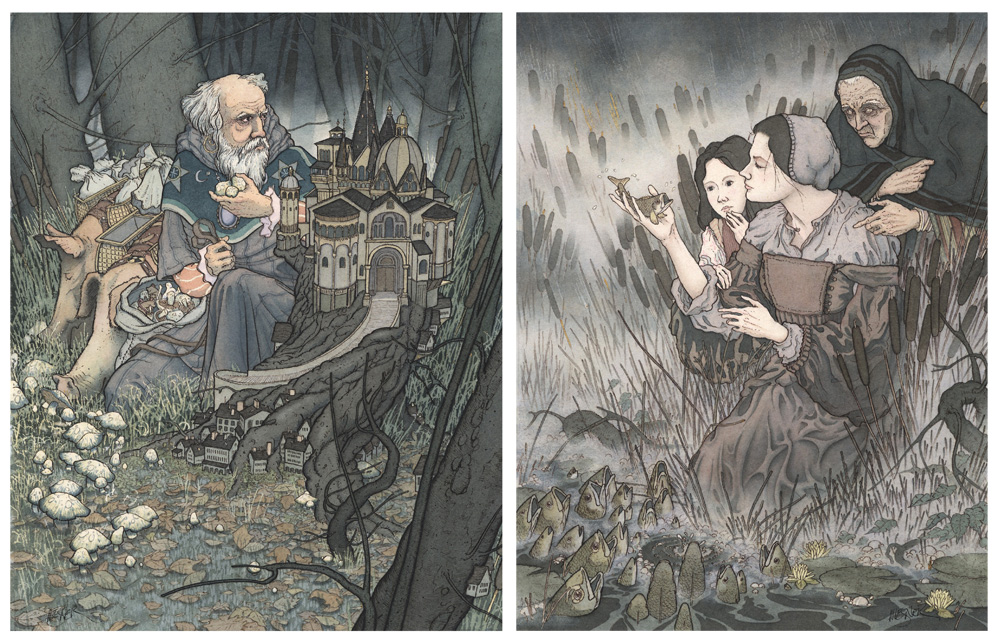
I also had things like this:
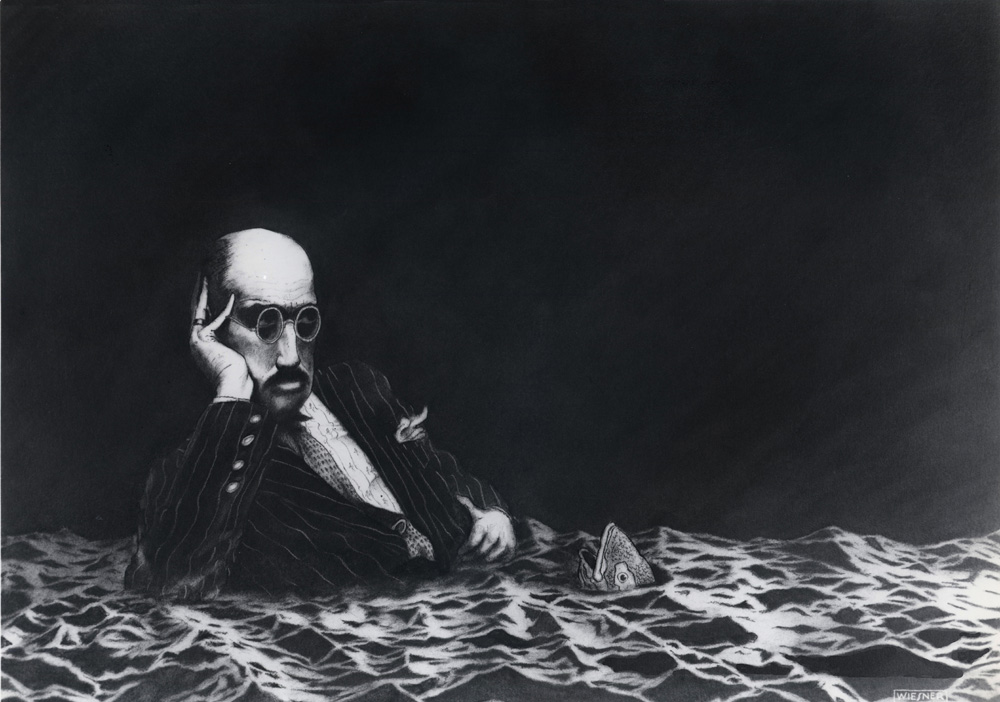
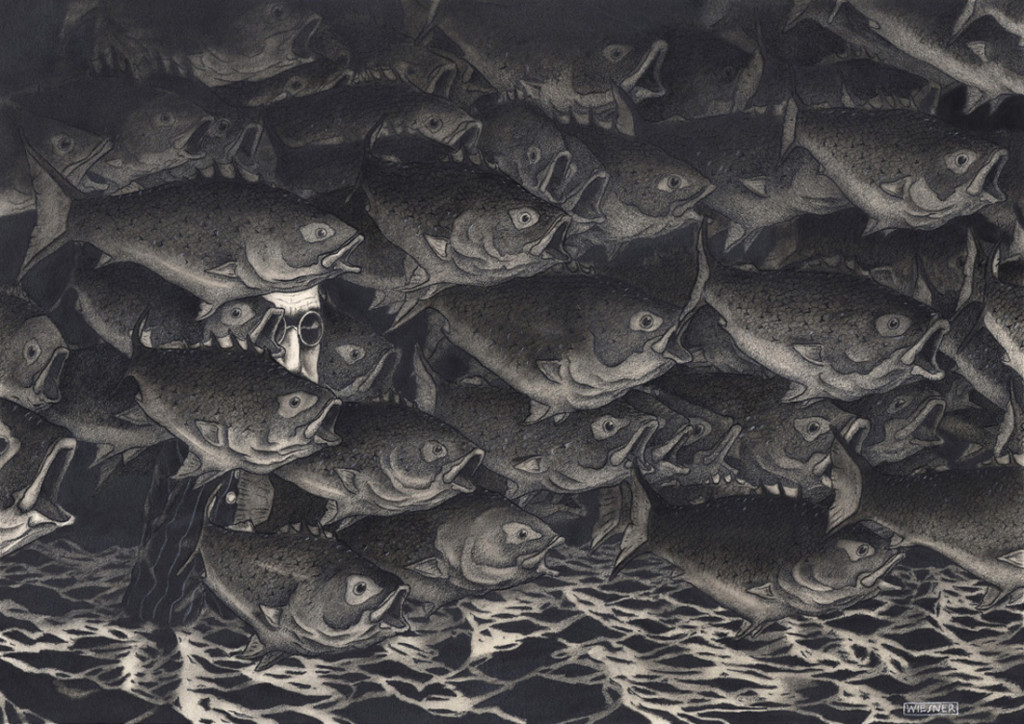
The first image is a scan of a photo – I sold the piece many years ago. The second image is a scan of its companion – the actual art. This gives you an idea of look, which is pencil and powdered graphic mixed with turpentine.
And then there was this:
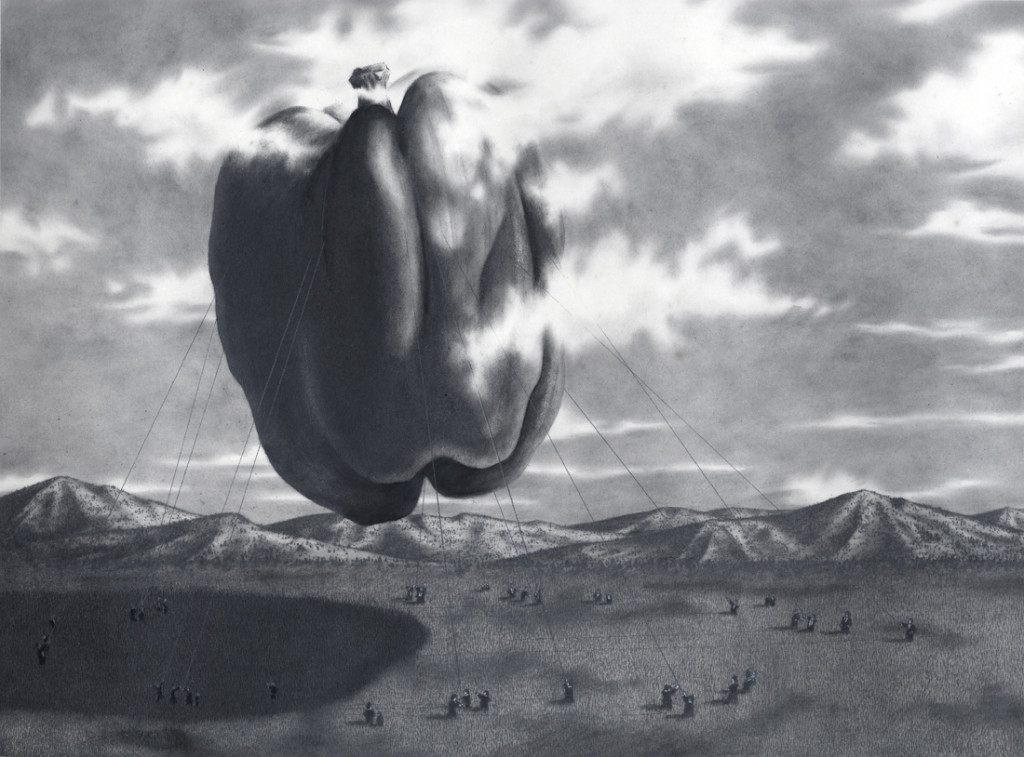
I stared with a pepper again, then put it in the sky, and this is where it went.
While taking my portfolio around to publishers, the folktale/fairytale images were well received by editors. The other things were greeted with incomprehension. I realized that if I wanted to illustrate books with imagery like that, I was going to have to write them myself.
Lo and behold, I did.
Flash forward. In 1991, after I had done Tuesday, I was looking at my vegetable in the sky picture for the hundredth time and wondering for the hundredth time, “Why is the pepper floating down to earth?”
This time, though, I had a thought – maybe something went up first. But, what? Maybe a seed? And then I flashed back to an elementary school science project where we had to grow beans from seeds in a Dixie Cup.
Voila – a story! The giant veggies were the result of a wildly ambitious science experiment by a precocious third grader.
The other element this picture has is scale change. I love how by making something larger or smaller than normal, you completely change its relationship to its environment. For a person shrunk small, their living room becomes the Grand Canyon.
I was dramatically affected by this idea as a kid from watching 1950’s Atomically Mutated Giant Big Movies on TV:
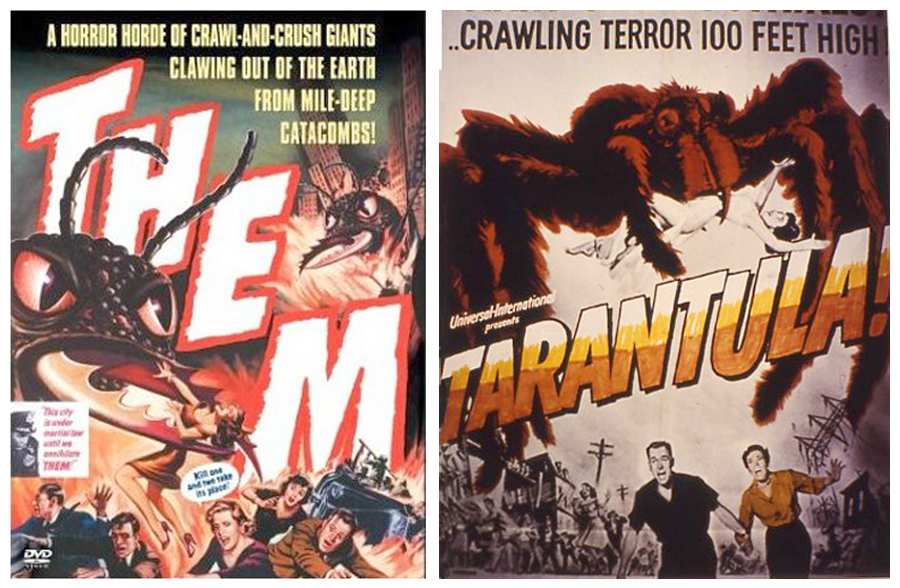
Or their cousin, the Atomically Mutated Tiny Person movie:
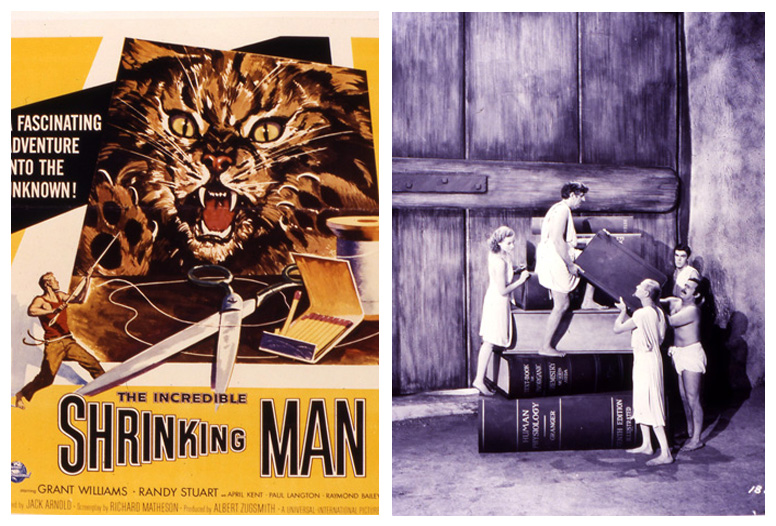
Dr. Cyclops, on the right.
So, why not substitute vegetables for bugs? Which is what I did in June 29, 1999, the book that came from the giant pepper = elementary school science project story.
Some sketchbook thumbnails:
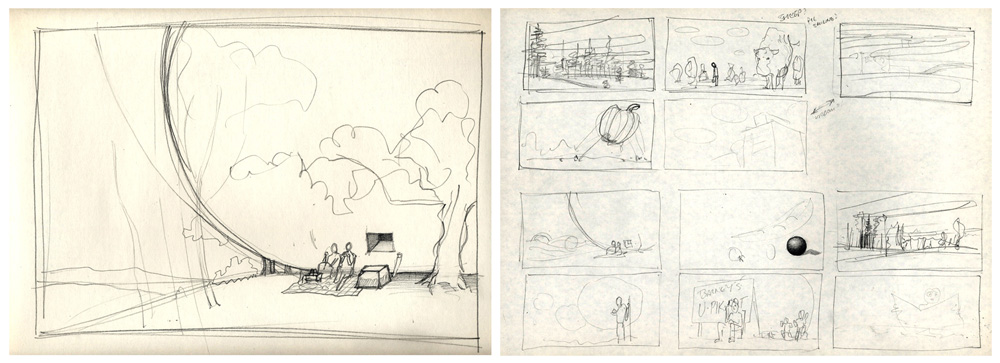
Some sketchbook concept drawings:
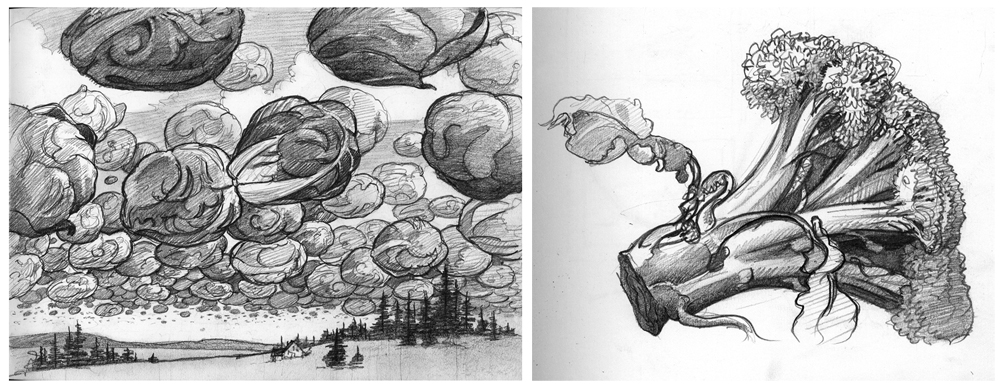
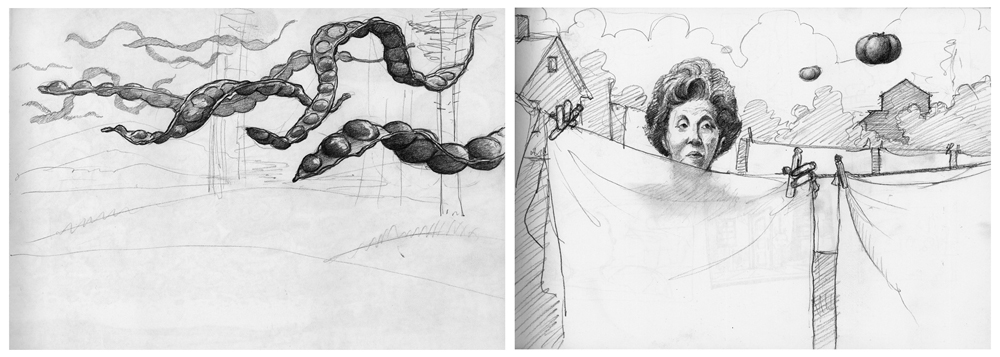
So how do you compose an image of a giant broccoli in your backyard? You can’t see it for real, right? Au contraire!
By making the houses and using a normal size head of broccoli, I can look at the scene from all vantage points and then decide how I want to compose the picture. Very simple, very effective:
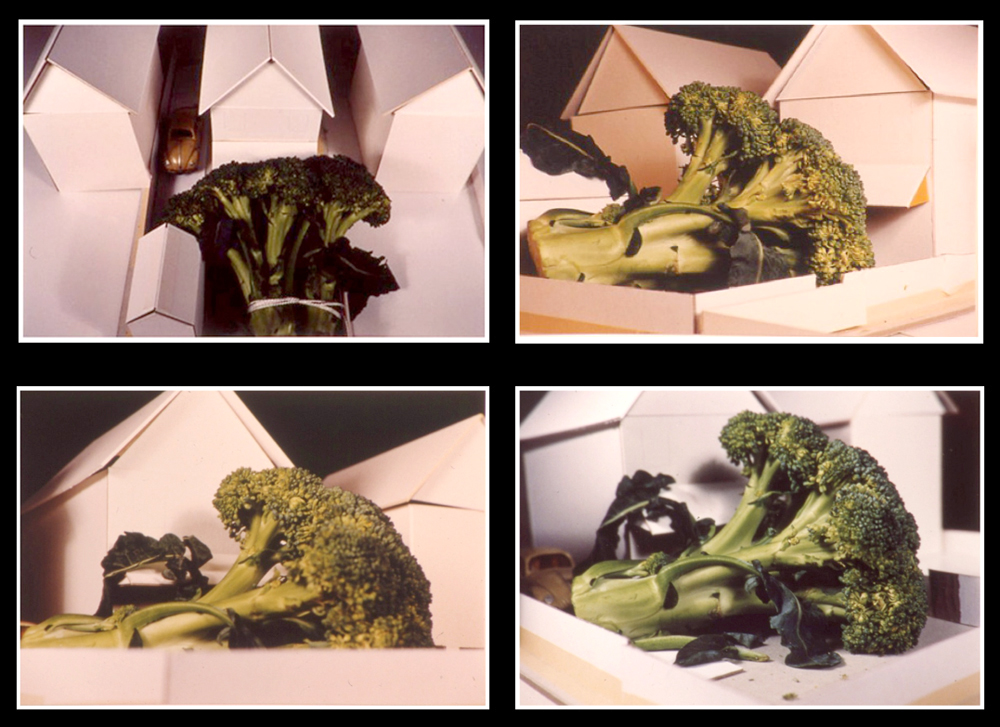
Here’s how that turned out:
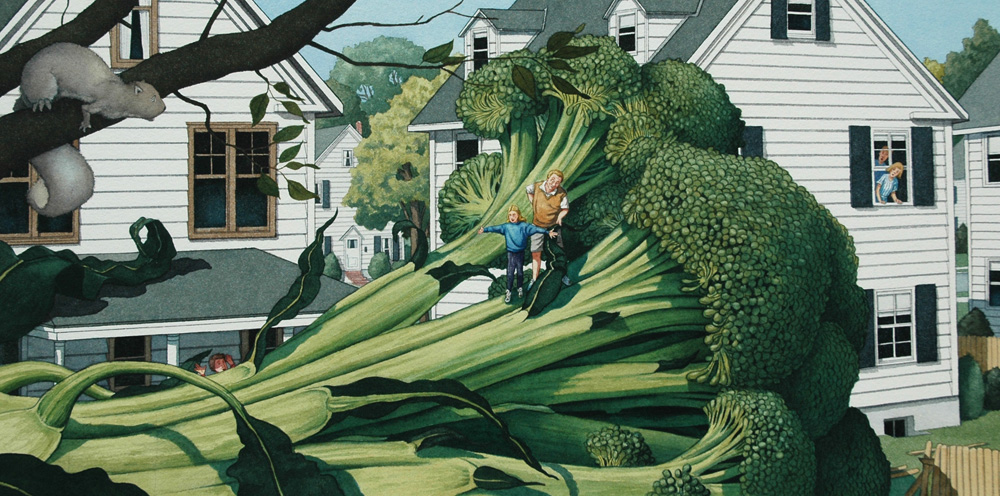
I changed the houses and added details in the drawing, but the model gave me the sense of scale.
Ah, scale! forever dear, forever kind.
Sprouts:
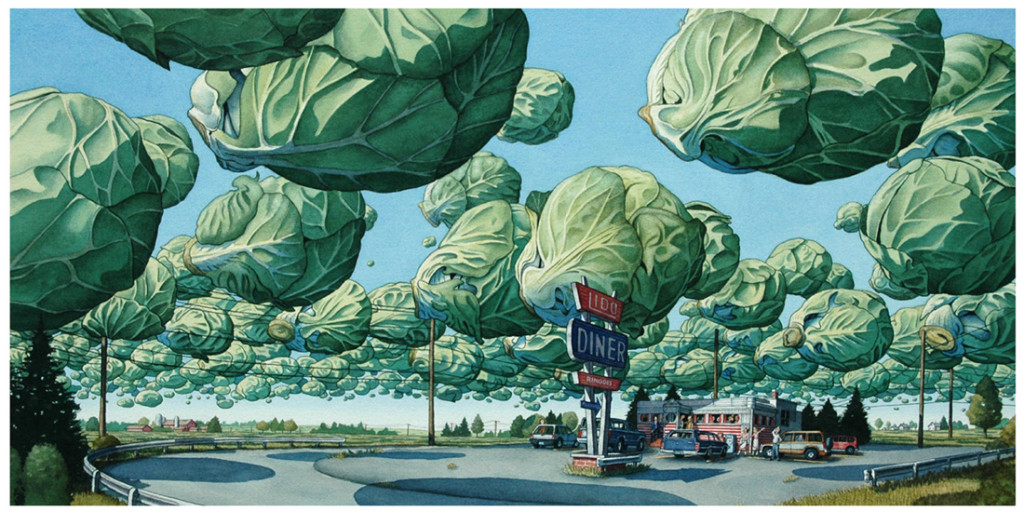
Turnips:
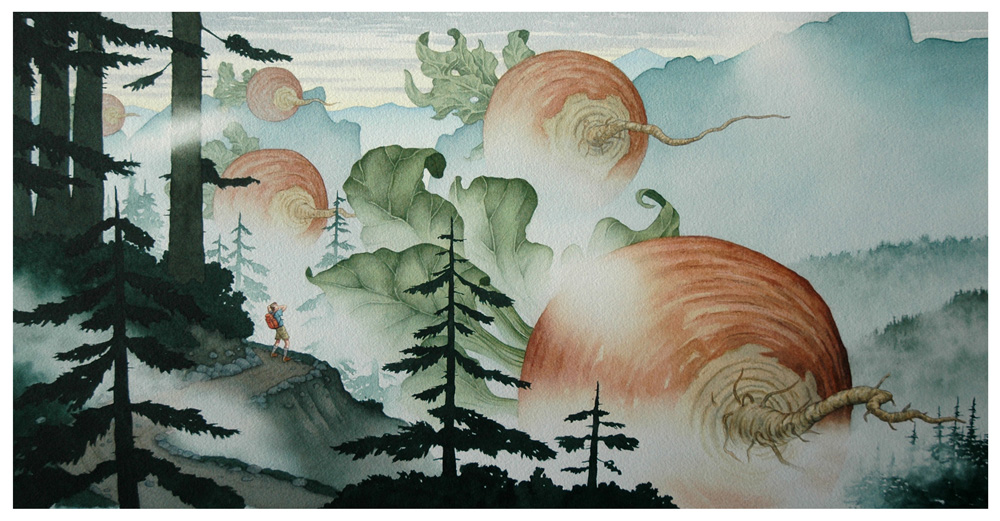
And, at last, my peppers – now in glorious color:
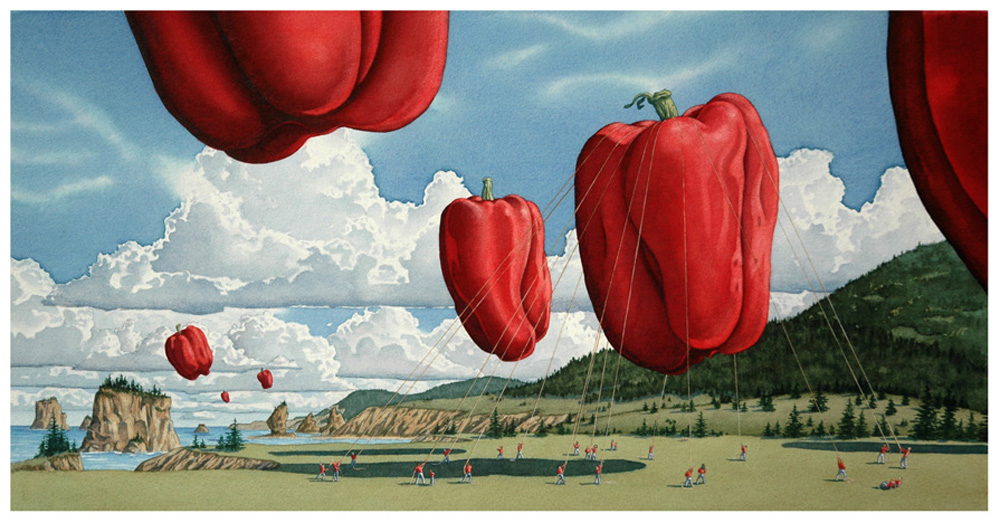
An idea shows up for no good reason? Don’t dismiss it. Play with it, explore it. You never know where it will take you.
Sometime after finishing June 29, I was re-watching the great old 1951 movie, The Thing from another world! The monster is actually made of plant matter. This revelation inspires the best line in the film, “An intellectual carrot? The mind boggles!”
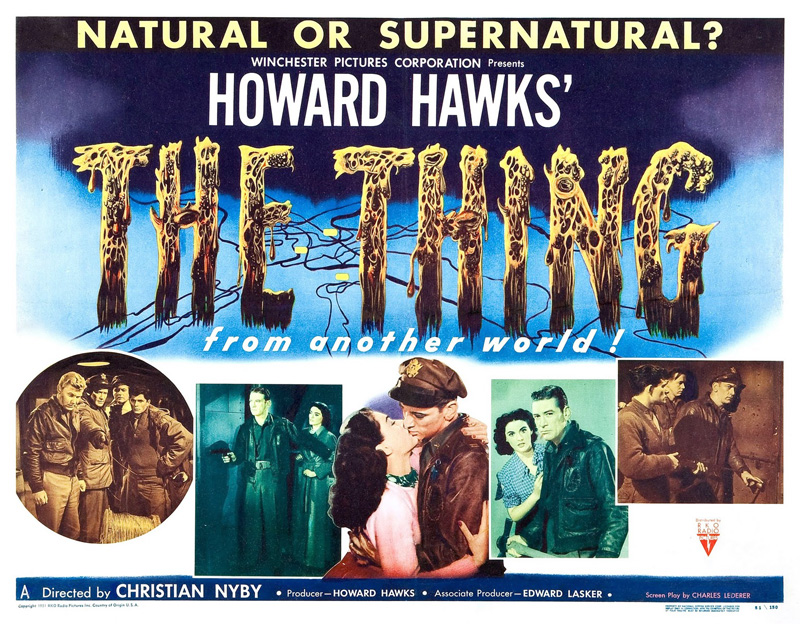
Part of the experiment to determine how to deal with the monster included this set up to feed alien seeds:
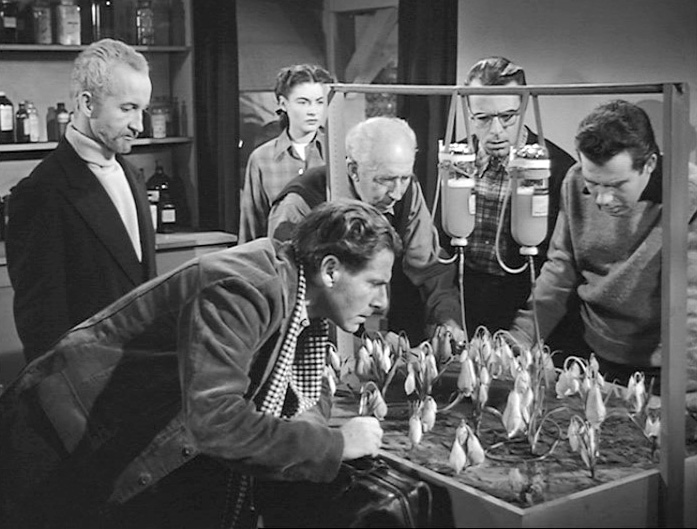
In my book, I came up with this system of feeding the seeds as they ascend into space:
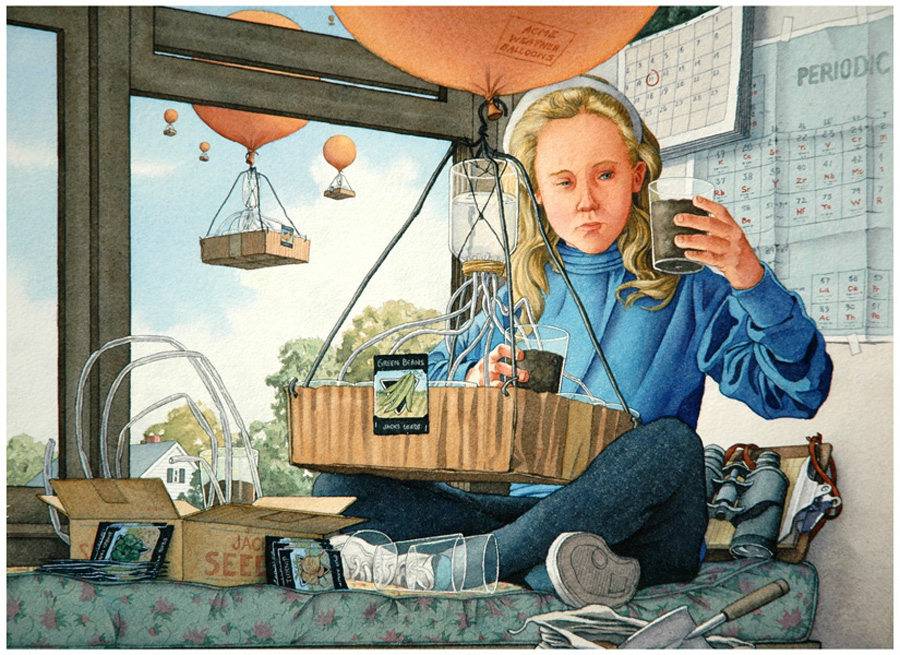
Who said watching TV was bad for you?